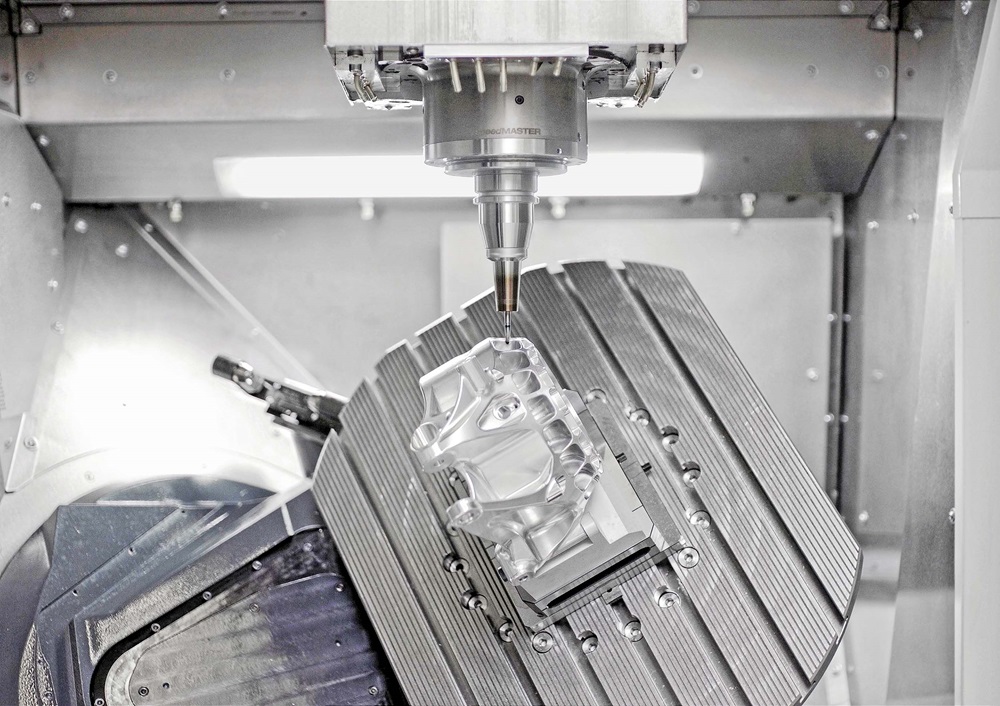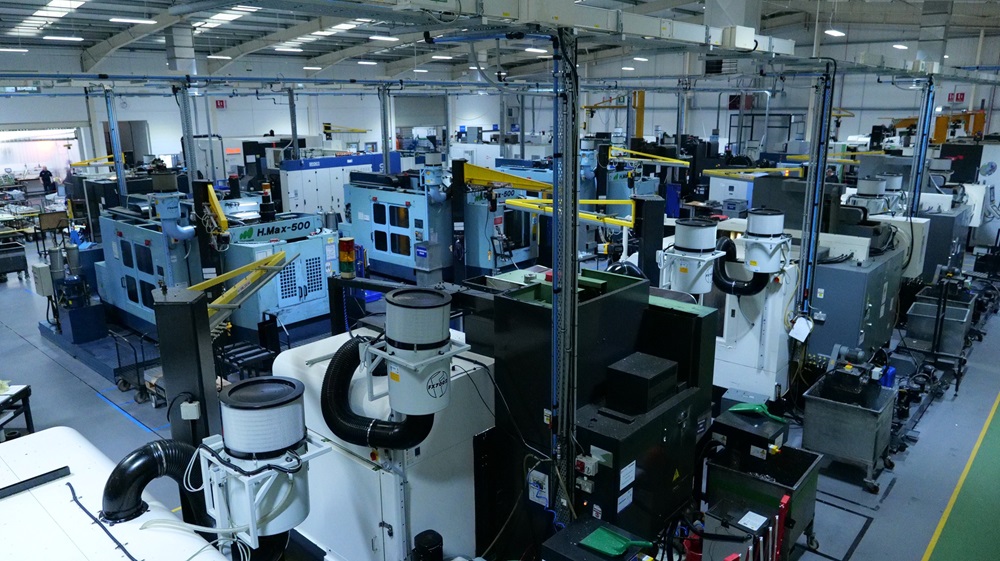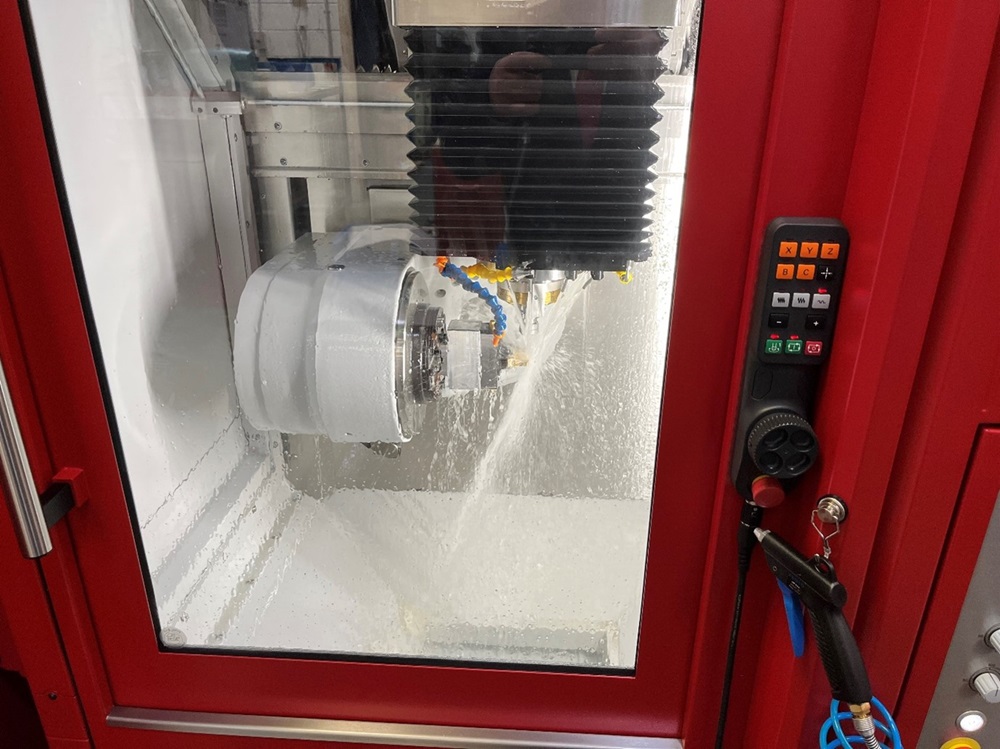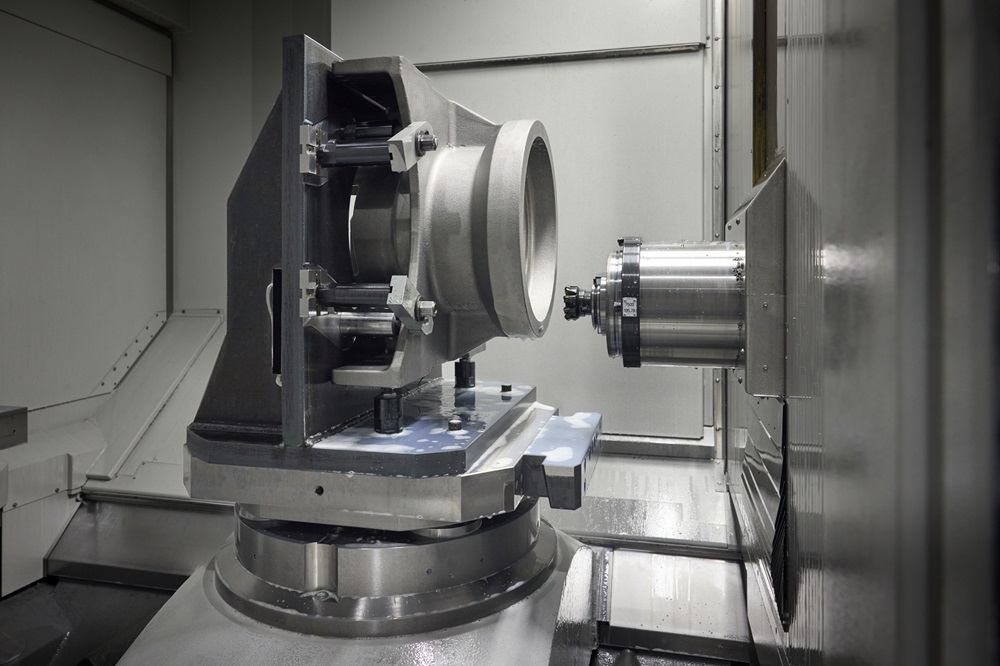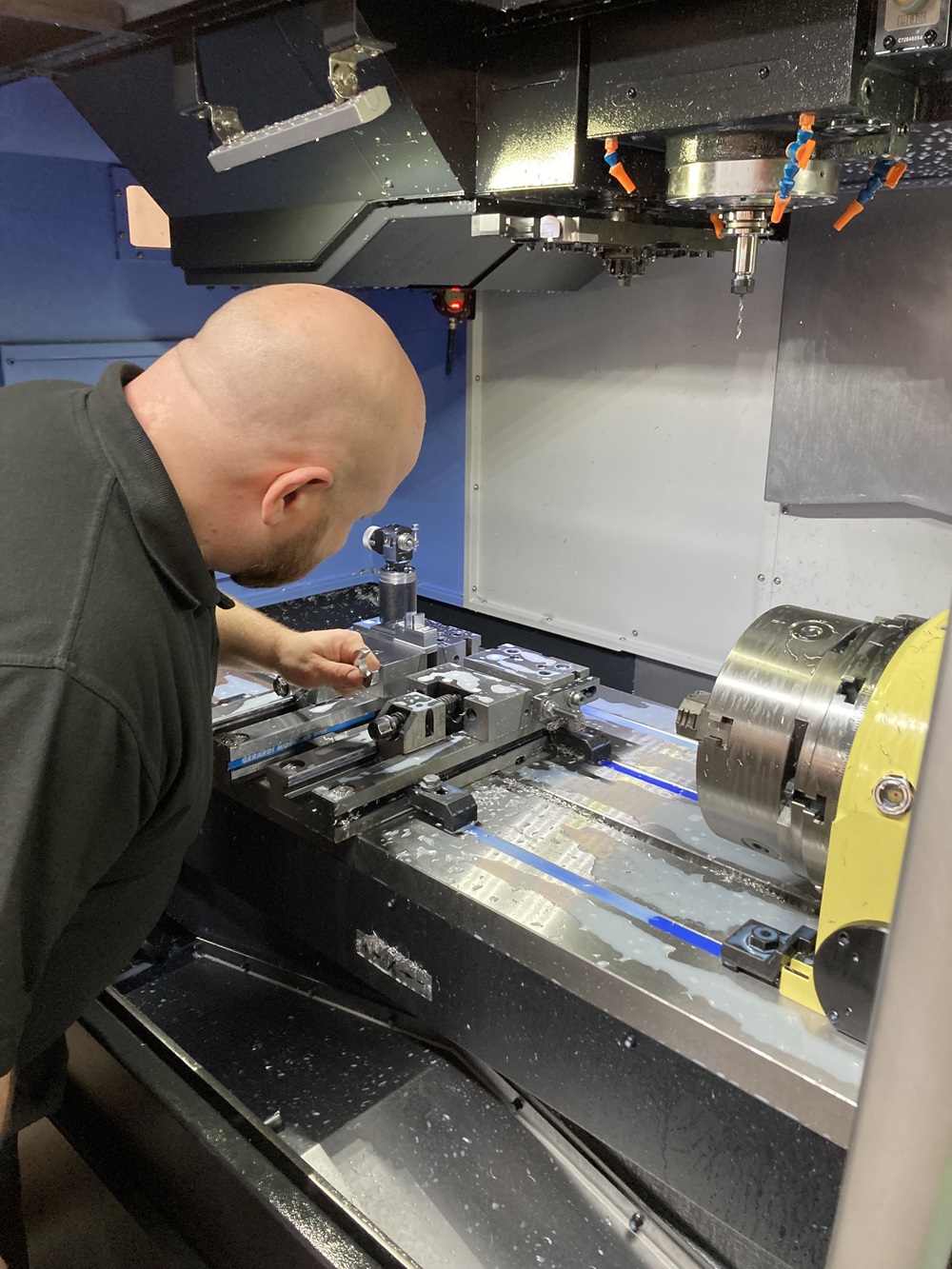A second-generation DMU 60 eVo five-axis vertical machining centre of swivelling rotary table design (featuring thermo-symmetrical gantry configuration and optimised kinematics), is now available from DMG Mori. The machine has been developed to meet increasing demands for precision, dynamics and flexibility, and utilises the manufacturer’s MX concept for process integration, automation, digital transformation and green transformation.
The platform integrates various manufacturing processes including milling, turning at up to 1,200 rpm, gear skiving using a proprietary technology cycle, and grinding. Inclusion of these additional metal-cutting possibilities transforms the production centre into a multi-functional machining solution that can flexibly adapt to a range of requirements and industries. Various automation options maximise machine utilisation, around the clock if required.
Compared with its predecessor, the machine has a working volume 40% larger at 750 x 550 x 550 mm. Direct-drive ballscrews in the linear axes are standard, but linear motors are an option offering 80 m/min rapid traverse. The table swivel range is -5/+110° and the maximum table load has increased by 100 kg to half a tonne. Steeply inclined, stainless steel interior surfaces and a 20% wider conveyor ensure effective chip evacuation and reliable production.
The machine bed is a hybrid mineral casting combining stiffness, strength, vibration damping and thermal stability, while comprehensive cooling keeps critical components at a constant temperature. The second-generation DMU 60 eVo is also available in a µPrecision version, enabling it to machine demanding components to accuracies measured in low single figure microns.
The spindle portfolio includes versions capable of speeds up to 40,000 rpm or a torque of 200 Nm. Tool storage with 30, 60 or 120 pockets is within the machine’s 9 m² footprint, which is 20% smaller than before.
More information www.dmgmori.com






